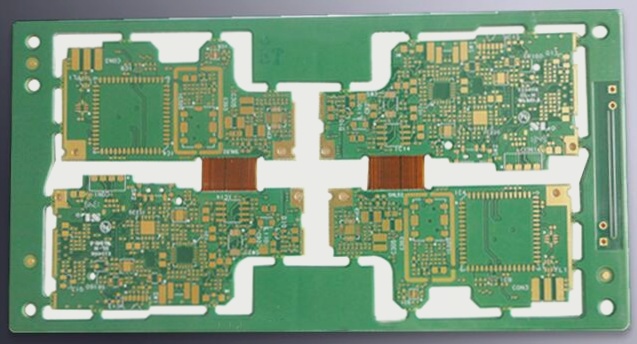The common PCB soldering defects, their appearance characteristics, potential hazards, and root cause analysis will be discussed in detail.
**Welding**
– **Appearance Characteristics**: A clear black boundary is visible between the solder and the component lead or the copper foil, with the solder recessed towards the boundary.
**Hazard**: This can cause improper functioning.
**Cause Analysis**: The component lead is not cleaned, lacks tin plating, or has oxidized. The PCB is not properly cleaned, and the flux used is of poor quality.
– **Appearance Characteristics of Solder Accumulation**: The solder joint structure is loose, and the surface appears white and matte.
**Hazard**: Insufficient mechanical strength, which may result in false soldering.
**Cause Analysis**: The solder quality is poor, and the soldering temperature is insufficient. If the solder hasn’t fully solidified, the component lead may become loose.
– **Excessive Solder**
**Appearance Characteristics**: The solder surface is convex.
**Hazard**: Excess solder is wasted and may lead to defects.
**Cause Analysis**: The soldering iron was withdrawn too late.
– **Solder Withdrawal Issues**
**Appearance Characteristics**: The solder covers less than 80% of the pad, and the solder does not form a smooth, continuous surface.
**Hazard**: Insufficient mechanical strength.
**Cause Analysis**: Poor solder fluidity or premature withdrawal of the soldering iron. The flux may also be insufficient, or the welding time was too short.
– **Rosin Welding**
**Appearance Characteristics**: Rosin slag appears in the weld.
**Hazard**: Weak joints, poor electrical continuity, and potential for intermittent connections.
**Cause Analysis**: Excessive or failed soldering, insufficient welding time, inadequate heating, or failure to remove the oxide film on the surface.
– **Overheating**
**Appearance Characteristics**: The solder joints are white, lacking metallic luster, and have a rough surface.
**Hazard**: The pad may peel off, and the mechanical strength is reduced.
**Cause Analysis**: The soldering iron’s power is too high, or the heating time is too long.
**Cold Soldering**
– **Appearance Characteristics**: The solder surface appears grainy, resembling tofu-like particles, and may sometimes show cracks.
**Hazard**: Low joint strength and poor conductivity.
**Cause Analysis**: The solder was disturbed before it had fully solidified.
—
This version improves readability while keeping the original technical details intact.

**Poor Infiltration**
Appearance Characteristics: The contact between the solder and the workpiece is excessive and uneven.
Hazard: Low strength, or intermittent connectivity.
Cause Analysis:
– The workpiece has not been properly cleaned.
– Insufficient or poor-quality flux.
– Inadequate heating of the workpiece.
**Asymmetry**
Appearance Characteristics: The solder fails to cover the entire pad.
Hazard: Insufficient strength.
Cause Analysis:
– Poor solder fluidity.
– Insufficient or poor-quality flux.
– Inadequate heating.
**Loose**
Appearance Characteristics: The PCB trace or component leads are movable.
Hazard: Poor or no electrical conduction.
Cause Analysis:
– The lead moves before the solder solidifies, leading to voids.
– Poor or incomplete lead wetting or processing.
**Sharp**
Appearance Characteristics: Sharp edges or points.
Hazard: Poor appearance and potential bridging issues.
Cause Analysis:
– Insufficient flux and excessive heating time.
– Incorrect soldering iron tip angle.
**Bridge**
Appearance Characteristics: Adjacent traces are connected by solder.
Hazard: Electrical short circuit.
Cause Analysis:
– Excessive solder.
– Incorrect soldering iron tip angle.
**Pinhole**
Appearance Characteristics: Holes visible under visual inspection or low-power magnification.
Hazard: Weak joints, which are prone to corrosion.
Cause Analysis:
– The gap between the lead and pad hole is too large.
**Fire-Breathing Solder Bulge**
Appearance Characteristics: A bulging solder joint at the lead root with a hidden cavity inside.
Hazard: Temporary conduction, but long-term poor conduction.
Cause Analysis:
– Large gap between the lead and pad hole.
– Inadequate lead filtration on double-sided PCBs.
– Excessive soldering time for through-hole components, causing air expansion within the hole.
**Copper Foil Lifting**
Appearance Characteristics: The copper foil detaches from the PCB.
Hazard: Board damage.
Cause Analysis:
– Excessive soldering time or high temperature.
**Peel Off**
Appearance Characteristics: The solder joint detaches from the copper foil (not from the copper foil or PCB itself).
Hazard: Open circuit.
Cause Analysis:
– Poor metal plating on the pad.



